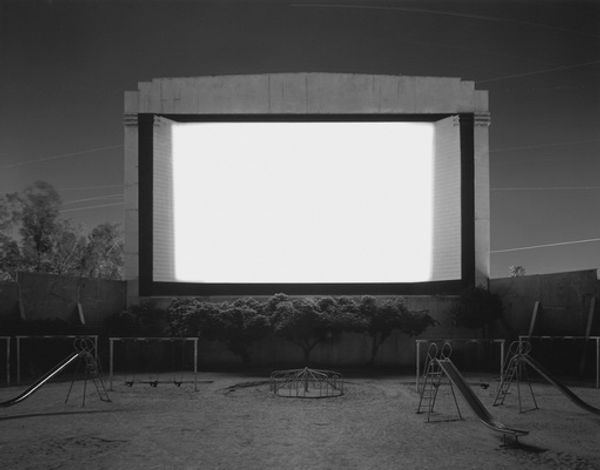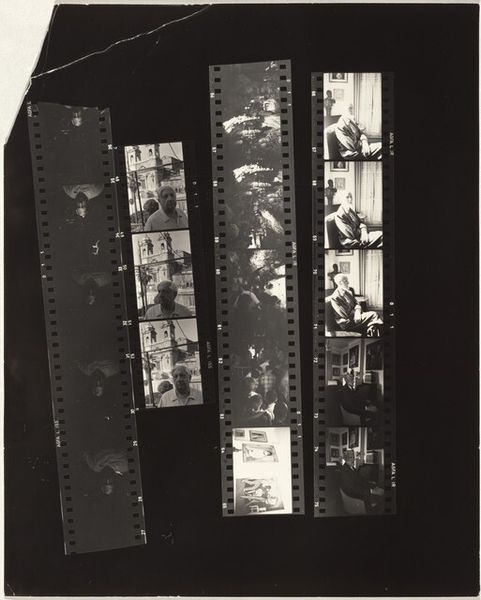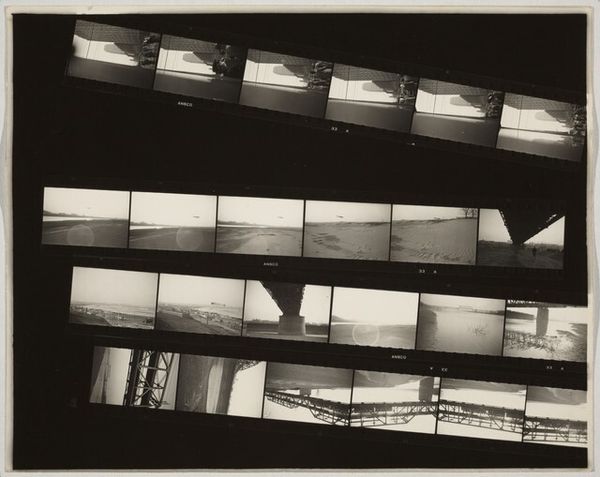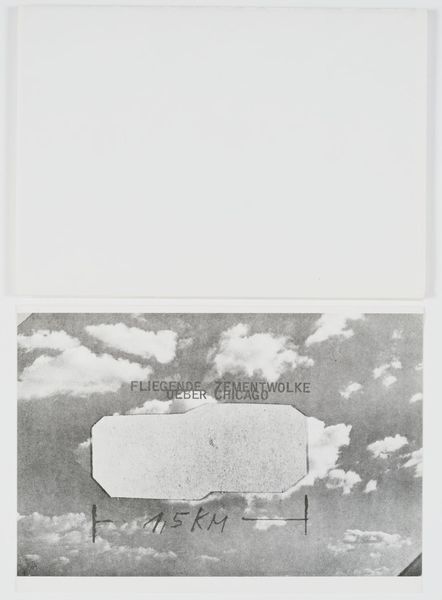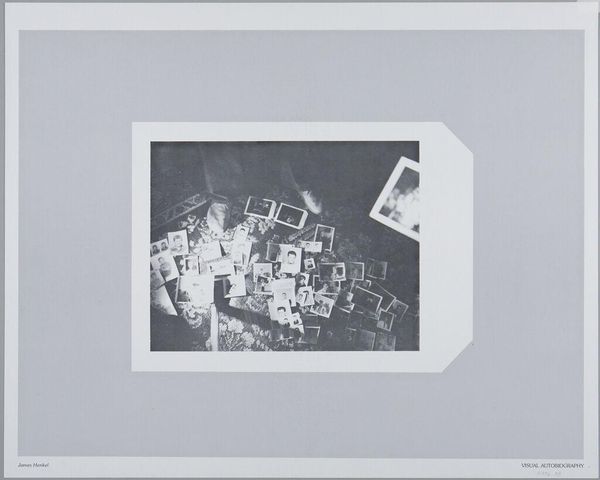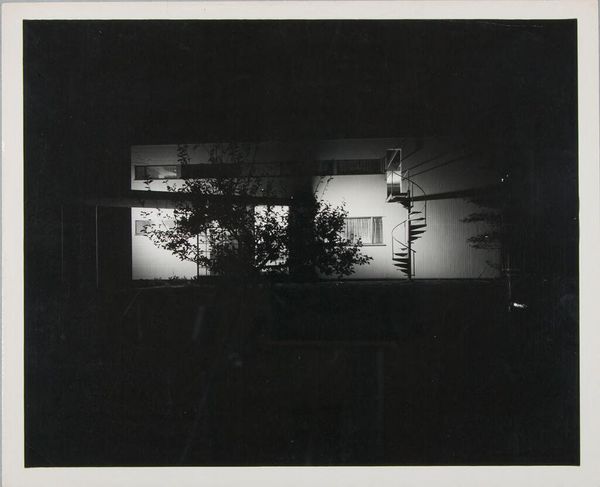
Dimensions: support: 80 x 115 mm
Copyright: © The estate of Július Koller | CC-BY-NC-ND 4.0 DEED, Photo: Tate
Editor: This is Július Koller’s “Anti-Performance (U.F.O.)”. The black and white photograph depicts an outdoor cinema and a lone figure. The vast blank screen contrasts with the small figure. What symbols do you see at play here? Curator: The blank screen, the "U.F.O.," functions as a potent signifier. Consider its temporal context. Koller, working in Communist Czechoslovakia, used emptiness as a symbol. What might a blank screen represent within that cultural landscape? Editor: Perhaps a rejection of prescribed narratives, a space for individual projection? Curator: Precisely. The figure, dwarfed by the screen, speaks to individual agency versus state apparatus. The "U.F.O." becomes a repository for unspoken desires. Does that resonate with you? Editor: It does. I see it as a powerful statement about freedom of thought. Thanks for pointing out how the context shapes the images! Curator: My pleasure! Visual symbols carry such weight and reveal much about the societies that create them.
Comments
tate 3 months ago
⋮
http://www.tate.org.uk/art/artworks/koller-anti-performance-ufo-t12574
Join the conversation
Join millions of artists and users on Artera today and experience the ultimate creative platform.
tate 3 months ago
⋮
Anti-Performance (U.F.O.) is the photographic documentation of a ‘cultural situation’, as Koller termed his conceptual installation and performance works. It consists of a black and white photograph mounted on a single sheet of card, with the work’s title, its year of production and the artist’s name handwritten along the bottom. The photograph shows Koller standing in front of a large white screen on an empty stage, facing rows of empty seats in the foreground. The large blank screen is reminiscent of a blank canvas. Many conceptual artists of the 1960s and 1970s investigated the artistic possibilities of exploring ‘nothingness’ or ‘blankness’ in their work. Such works were often linked to exploring the tension between visual and verbal communication, as in Joseph Kosuth’s Blank 1967 (reproduced D. Marzona, Conceptual Art, Cologne 2006, p.7). Although Koller often used painted symbols such as question marks, or plus and minus signs, rather than investigating systems of meaning, his ‘anti-happenings’ aim to question the cultural context the artist was working in.
